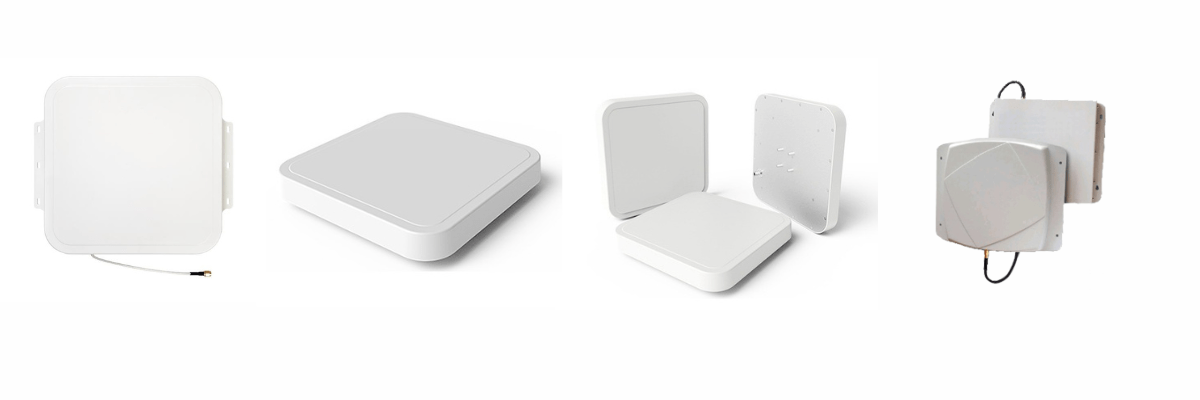Frequently Asked Questions (FAQ) About RFID Antennas
What are RFID antennas and how do they work?
RFID antennas transmit and receive radio signals between RFID tags and readers. They play a crucial role in the RFID system by enabling communication over various frequencies, such as UHF, HF, and LF. Depending on the application, the right antenna can extend read ranges or improve accuracy, ensuring optimal system performance.
What are the different types of RFID antennas?
There are two main types of RFID antennas: circularly polarized and linearly polarized. Circularly polarized antennas send signals in a helical pattern, which helps capture RFID tags from multiple orientations. This is ideal for environments where tags are moving or positioned randomly. Linearly polarized antennas, on the other hand, transmit in a single plane, making them suitable for controlled settings where tags are consistently aligned. GAO RFID offers both types to meet varying needs.
How do I choose the right RFID antenna for my application?
Choosing the correct antenna depends on several factors, including the required read range, the type of tags being used, and environmental conditions. For instance, outdoor environments might require weatherproof antennas, while applications in warehouses might benefit from directional antennas. At GAO RFID, we offer expert guidance to ensure you select the best antenna based on your specific requirements.
What factors affect RFID antenna performance?
Antenna performance is influenced by frequency, polarization, and environmental factors like interference or obstacles. Frequency (UHF, HF, LF) dictates how far and fast signals travel. Polarization determines how well the antenna communicates with tags in various orientations. Other factors such as nearby metal objects or electronic devices can cause interference, reducing read range or signal clarity. GAO RFID’s antennas are designed and tested to perform optimally in diverse environments.
What is the difference between UHF, HF, and LF antennas?
UHF antennas are typically used in applications requiring long read ranges, such as asset tracking, because they offer high-speed communication over a wider area. HF antennas are more suited for applications where security and accuracy are crucial, such as access control. LF antennas are often used in short-range, highly localized applications like livestock identification. GAO RFID offers antennas in all three frequency ranges, ensuring that we have a solution for every use case.
How do you install an RFID antenna?
Installation depends on the type of antenna and its intended application. Generally, the antenna needs to be positioned in such a way that it optimally reads RFID tags, whether that’s on walls, ceilings, or gate structures. Directional antennas should be aimed at the area where tags will pass, while omnidirectional antennas can be placed in the center of the activity zone. GAO RFID provides detailed installation guides and support for all of our antennas, ensuring a smooth setup process.
What are the ideal environments for RFID antennas?
RFID antennas are used in a wide variety of environments, from industrial warehouses to retail stores. Outdoor environments, like parking lots or shipping yards, may require rugged antennas designed to withstand harsh conditions, while indoor environments might focus on aesthetics and compact designs. GAO RFID antennas are built with durability and performance in mind, suited to different environmental conditions.
How do I maintain an RFID antenna?
Maintaining RFID antennas involves regular cleaning, checking for physical damage, and ensuring that connectors are secure. Environmental factors such as dust, moisture, and extreme temperatures can affect performance, so regular inspection is recommended. For outdoor antennas, additional maintenance like waterproofing and rust prevention may be necessary. GAO RFID provides detailed maintenance guidelines with every antenna purchase, ensuring long-term reliability.
Can RFID antennas be used in harsh environments?
Yes, RFID antennas can be designed to withstand harsh conditions, including extreme temperatures, moisture, and dust. For example, antennas used in outdoor industrial settings or cold storage environments need to be weatherproof and robust. GAO RFID offers ruggedized antennas built specifically for these applications, ensuring reliable performance in tough conditions.
What kind of testing is performed on RFID antennas?
RFID antennas undergo a range of tests to ensure they meet industry standards for performance and durability. This includes testing for signal range, polarization efficiency, environmental resistance (such as IP ratings for waterproofing), and electromagnetic interference (EMI) compliance. GAO RFID’s stringent quality assurance process ensures that all antennas meet high performance and durability standards, suitable for mission-critical applications.
Case Studies
- Case Study 1: Asset Tracking in Chicago
An industrial warehouse in Chicago deployed UHF RFID antennas to optimize asset tracking across multiple storage areas. GAO RFID helped integrate a system that streamlined their inventory management, improving tracking accuracy and reducing the time spent locating critical assets. - Case Study 2: Retail Management in New York City
A retail company in New York City implemented RFID antennas across several locations to manage in-store inventory. With GAO RFID’s support, the retailer achieved real-time visibility of stock, reducing shrinkage and improving supply chain efficiency. - Case Study 3: Agricultural Monitoring in Vancouver, Canada
A farming operation used LF RFID antennas for livestock tracking in Vancouver. GAO RFID assisted with the system’s deployment, enabling the client to efficiently monitor and manage their livestock across multiple fields, even in challenging weather conditions.
Our products are in stock and can be shipped overnight to Continental U.S. and Canada from one of our local warehouses. If you have any questions, our technical experts can help you. Please fill out this form or email us.

